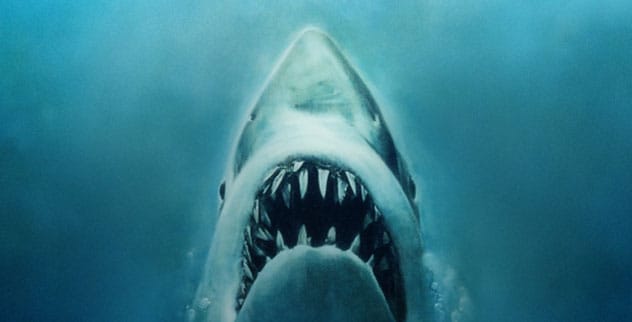We often praise directors, actors, writers, and cinematographers for their contributions to the magic of cinema. Their meticulous work crafts the worlds and stories we love. Yet, nestled away in the post-production process is a crucial role that frequently goes unsung: the film editor.
These dedicated professionals are the unsung heroes who piece together hours of footage, shaping the final narrative, pacing, and emotional impact. Without their sharp eyes and storytelling instincts, some of the most beloved and iconic films might have ended up vastly different, possibly even destined for obscurity. It’s in the cutting room where raw footage is transformed into cinematic gold.
While today’s big-budget productions often have tighter control from start to finish, history is filled with examples where the editor stepped in to rescue a project from the brink. Many films we now consider classics started as messy, overlong, or incoherent cuts.
Let’s dive into ten remarkable instances where skilled editors wielded their creative scissors and saved the day, turning potential flops into cinematic triumphs.
Easy Rider (1969)
The quintessential American road movie, Easy Rider, captures the spirit and anxieties of the late 1960s counterculture. Starring Peter Fonda, Dennis Hopper (who also directed), and Jack Nicholson, it follows two bikers encountering the raw realities of America.
Hopper’s initial directorial cut, inspired by avant-garde filmmakers, clocked in at a lengthy two hours and forty-five minutes. It jumped erratically through time and lacked a clear narrative thread – a tough sell for a studio banking on a biker film. The structure was unconventional, and the plot was minimal.
Recognizing the need for a more accessible film, the studio brought in director Henry Jaglom and editor Donn Cambren. Together, they painstakingly trimmed the film down to a lean 95 minutes, creating a linear flow. This crucial edit transformed Easy Rider from a potentially confusing art piece into a landmark cultural and cinematic event still celebrated today.
Star Wars (1977)
It might seem strange now, given George Lucas’s later tendency to tweak the original trilogy, but the first Star Wars film itself needed significant rescue in the edit bay. The initial cut, assembled by editor John Jympson, didn’t quite capture the magic.
After a screening for fellow directors Brian De Palma and Steven Spielberg drew criticism, Lucas knew changes were needed. He brought in a new editing team: Paul Hirsch, Marcia Lucas (his wife at the time), and Richard Chew. They radically restructured the film’s opening, streamlining the first act to focus sequentially on the space battle, the droids’ escape, and finally, Luke Skywalker. This linear approach created better pacing and audience engagement.
De Palma also famously suggested adding the iconic opening text crawl to provide necessary context. These editorial decisions were pivotal, shaping Star Wars into the tightly paced adventure that launched a global phenomenon.
Justice League (2021)
The saga of Justice League is a unique modern example. Director Zack Snyder had to depart the original 2017 production due to personal tragedy, and Joss Whedon was brought in to finish the film. However, Whedon’s reshoots and tonal shifts resulted in a movie that felt disjointed and failed to satisfy many fans or critics.
Almost immediately, a fan campaign emerged demanding the release of the “Snyder Cut,” believing Snyder’s original vision was superior. After years of campaigning, Warner Bros. eventually greenlit the project for their streaming service, HBO Max.
Snyder collaborated with editor Carlos Castillo, using existing footage and completing visual effects for scenes cut from the theatrical release. The result, Zack Snyder’s Justice League, was a stark contrast. Running a hefty four hours, it restored Snyder’s intended tone, character arcs, and visual style, receiving a much warmer reception from fans who felt the original vision was finally realized – a rescue orchestrated years after the initial release.
Annie Hall (1977)
Woody Allen’s beloved romantic comedy-drama Annie Hall wasn’t always the focused character study we know today. Its journey through the editing room was almost as complex and quirky as the film itself.
Initially, the film had a much broader scope, attempting to weave in multiple storylines and ideas. Editor Ralph Rosenblum initially worked to enhance the humor but found the material sprawling and unfocused. He and co-writer Marshall Brickman felt it lacked coherence. Working with Wendy Greene Bricmont, Rosenblum began drastically reshaping the narrative, cutting scenes and rearranging sequences almost at will.
Their aggressive editing resulted in a film running only 75 minutes, significantly shorter than the typical feature length. With pressure mounting, they continued refining it right up to the test screenings, even recording and adding Allen’s iconic narration mere hours before the first showing. This last-minute sculpting saved the film, transforming a sprawling concept into a sharp, witty, and influential classic.
The Thin Red Line (1998)
Director Terrence Malick is renowned for his poetic, often non-linear filmmaking style, prioritizing atmosphere and theme over conventional narrative. Editing his films requires a unique sensibility, as demonstrated by the work on his WWII epic, The Thin Red Line.
Malick shot an enormous amount of footage – reportedly 1.5 million feet of film. Editors Leslie Jones and Billy Weber faced the Herculean task of condensing this into a watchable movie. Their initial cut was five hours long, a version they had to persuade Malick to even watch. Joined later by a third editor, Saar Klein, the team embarked on a grueling 13-month post-production journey.
Malick focused on individual moments and emotional resonance rather than overall structure. The editors had to work diligently to shape the scenes into a cohesive narrative arc that audiences could follow, balancing Malick’s impressionistic vision with the need for structure. Their efforts were crucial in making The Thin Red Line accessible enough to become both a critical success and a fan favorite.
Men in Black (1997)
Barry Sonnenfeld’s sci-fi comedy hit Men in Black had a surprisingly rocky path through post-production, especially concerning its plot clarity.
Just weeks before the film was scheduled to be finished and scored, studio executives at Sony expressed concerns. They felt the intricate plot involving warring alien factions was too complex for mainstream audiences and demanded changes to simplify the entire story. This late-stage intervention put immense pressure on the editing team.
Editor Jim Miller had to rapidly re-engineer the film’s narrative according to the studio’s notes. This involved reordering scenes, potentially adding new material (though details are scarce), and crucially, altering the subtitles for the alien dialogue to fit the revised plot points. While driven by studio demands, this editorial overhaul streamlined the story, contributing to the film’s massive $600 million box office success and launching a multimedia franchise.
First Blood (1982)
While Rocky made Sylvester Stallone a star, First Blood cemented his status as an action icon, introducing the world to John Rambo. This gritty survival thriller launched a franchise that spanned decades.
However, the initial cut of First Blood was far from the lean action film we know. It ran for roughly three and a half hours and was reportedly slow and meandering. Stallone himself found it so disastrous that he feared it would ruin his career and allegedly tried to buy the negatives just to destroy them.
Fortunately, cooler heads prevailed. The editing team undertook a massive restructuring, slicing the runtime nearly in half to a tight 93 minutes. This involved removing large sections and significantly altering the original ending, which saw Rambo die. The tighter pacing and revised conclusion transformed the film from a potential career-ender into a box office smash, proving the power of ruthless editing.
The Limey (1999)
Steven Soderbergh’s neo-noir thriller The Limey marks an interesting point in his career, bridging his indie roots with his move towards bigger studio pictures. The film’s distinctive style owes much to a bold editorial decision.
Working from Lem Dobbs’s script, Soderbergh initially shot and cut the film following a conventional, linear structure. However, upon reviewing this initial cut, both Soderbergh and his editor, Sarah Flack, felt something was missing – the result was flat and lacked impact.
Instead of merely tweaking, they decided to completely dismantle and rebuild the film. They adopted a non-linear approach, fragmenting the timeline and intercutting past and present moments. This radical restructuring not only salvaged the film but also deeply enhanced its themes of memory, loss, and the fractured nature of the past, creating the tension and intrigue the first cut lacked. It became a cult classic largely thanks to this innovative editing.
Blade Runner (1982)
Ridley Scott’s sci-fi masterpiece Blade Runner faced numerous production challenges, including on-set friction and studio interference, leading to a theatrical release that compromised Scott’s vision and performed poorly at the box office.
The film might have faded into obscurity if not for a chance event years later. In 1990, a workprint version (an early rough cut) was accidentally screened in Los Angeles. This version lacked the studio-imposed happy ending and Harrison Ford’s reluctant voice-over narration. Audience reaction was overwhelmingly positive.
This prompted Warner Bros. to authorize a new edit. Supervised by film preservationist Michael Arick, working closely with Scott’s original notes, the 1992 “Director’s Cut” removed the narration, restored ambiguous elements (like the unicorn dream sequence), and reinstated Scott’s intended ending. This editorial resurrection transformed Blade Runner‘s reputation, cementing its status as a profound and influential sci-fi classic.
Jaws (1975)
Steven Spielberg’s Jaws terrified audiences, created the summer blockbuster phenomenon, and launched his career into the stratosphere. Much of its terrifying effectiveness, however, stemmed from a technical problem solved brilliantly in the editing room.
The mechanical sharks built for the film were notoriously unreliable and often looked unconvincing on camera. Showing the shark frequently, as initially perhaps intended, would have likely undermined the horror. Editor Verna Fields recognized this limitation as an opportunity.
Fields made the crucial decision to drastically limit the shark’s screen time, especially full-body shots. Instead, she masterfully used quick cuts, suggestive underwater shots (like the iconic POV), glimpses of fins and teeth, and John Williams’s legendary score to build suspense and terror. By showing less, she made the shark infinitely more menacing in the audience’s imagination. This editing choice didn’t just save Jaws; it fundamentally changed horror filmmaking, proving that suggestion is often more powerful than explicit visuals.
These ten films serve as powerful reminders of the editor’s vital role in filmmaking. From salvaging troubled productions to refining masterpieces, the art of editing shapes our cinematic experiences more than we often realize. The next time you watch a perfectly paced thriller or a deeply moving drama, take a moment to appreciate the unseen hand of the editor who helped bring that vision to life.
Which films do you think benefited most from a great edit? Leave your comment below!










